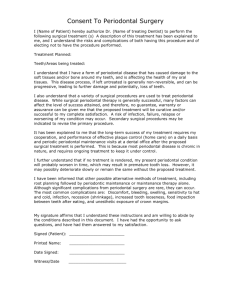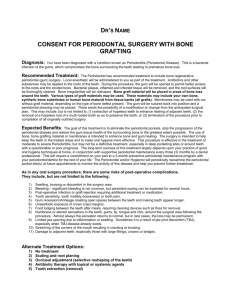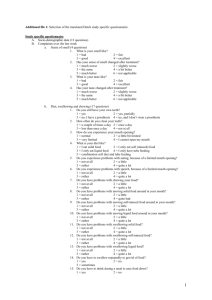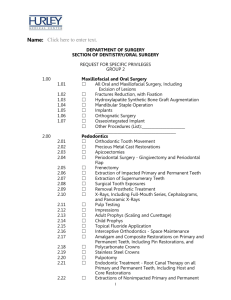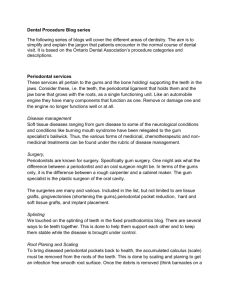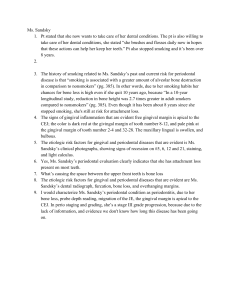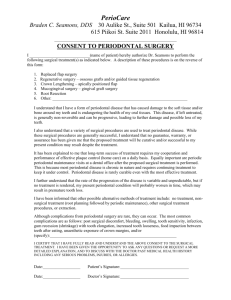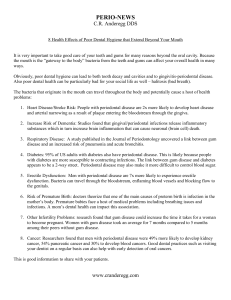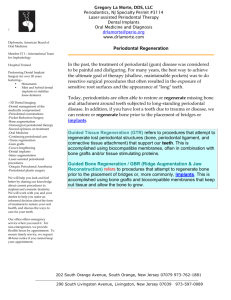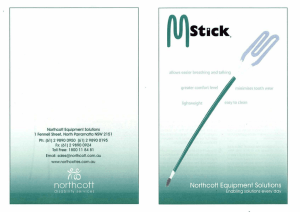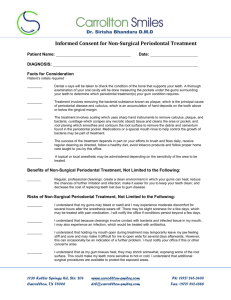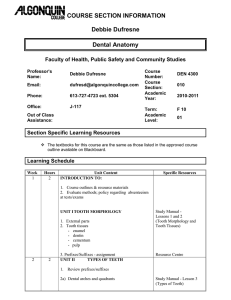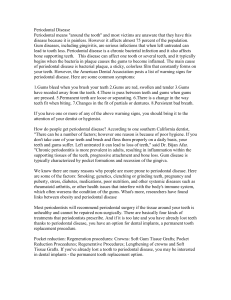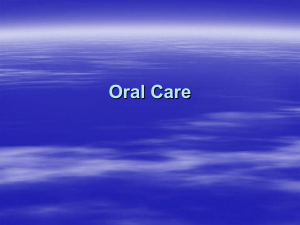8-Diagnosis and Teatment planning
advertisement
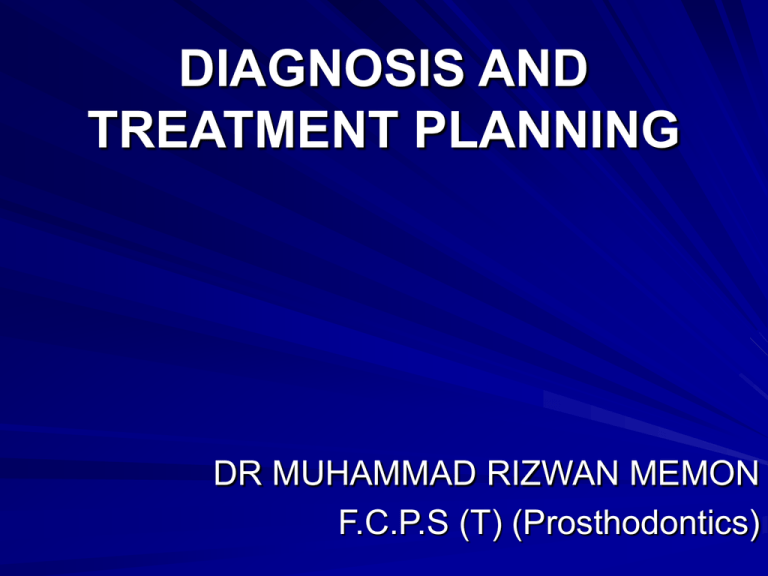
DIAGNOSIS AND TREATMENT PLANNING DR MUHAMMAD RIZWAN MEMON F.C.P.S (T) (Prosthodontics) Patient Interview Demographic data Chief complaint and its history Medical history review Dental history review Patient expectations Infection Control Doctor: – Gloves – Mask – Glasses Instruments: – Sterilization Operatory: – Scrubbing & wiping of surfaces – Carefully handling of disposable materials Clinical Examination Extra Oral: – TMJ, Mouth opening etc Intra Oral: – Existing Teeth Periodontal health Occlusion Conservative & Endodontic status – Residual ridges – Height of floor of mouth Radiographic Examination Periodontal bone loss Structure of basal bone in denture bearing areas Presence of perapical bone loss & furcation involvement Examination of Diagnostic Casts Permit view of occlusion from lingual & buccal aspects, degree of overclosure, amount of interocclusal space available etc Permit topographic survey of occlusion Permits a logical & comprehensive presentation to the patient Individual impression trays may be fabricated Used as constant reference as the work progress Become a permanent part of patient record Treatment Planning Phase-1 – – – – Collection & evaluation of diagnostic data Treatment of emergency conditions Determining type of prosthesis Patient motivation Phase-2 – Preprosthetic mouth preparation ( Relief of pain, Oral surgical procedures, Periodontal therapy, Correction of occlusal plane, Orthodontic correction, Splinting weakened teeth – Making primary impression – Patient motivation Phase-3 – Designing the RDP Phase-4 – Prosthetic mouth preparation (Preparation of undercuts, guide planes & rest seats) – Making the final impression – Patient motivation Phase-5 – Fabrication of RDP Phase-6 – Insertion – Post insertion management – Periodic recall and review Differential Diagnosis Fixed OR Removable Dental Prosthesis Indications for fixed restorations – Tooth-bounded edentulous regions – Modification spaces – Anterior modification spaces – Replacement of unilaterally missing molars (SDA) Indications for removable restorations – Distal extension situations – After recent extractions – Long span – Need for effect of bilateral stabilization – Excessive loss of residual bone – Unusually sound abutment teeth – Abutments with guarded prognosis – Economic considerations


